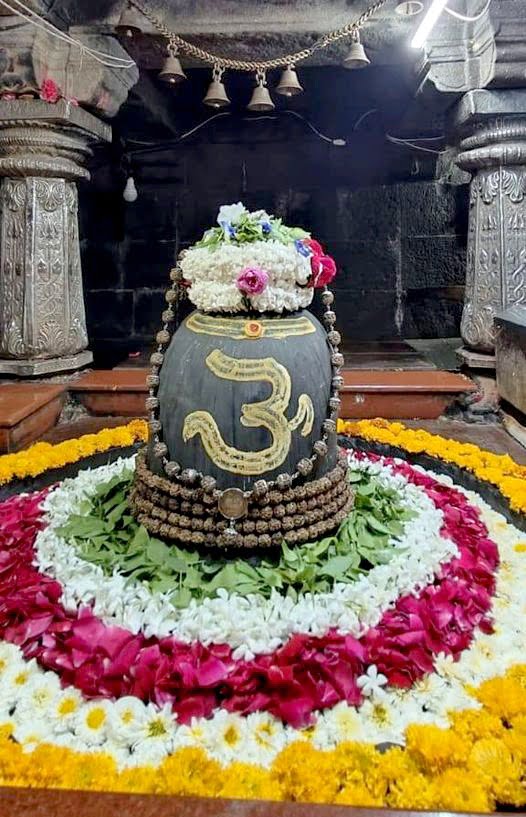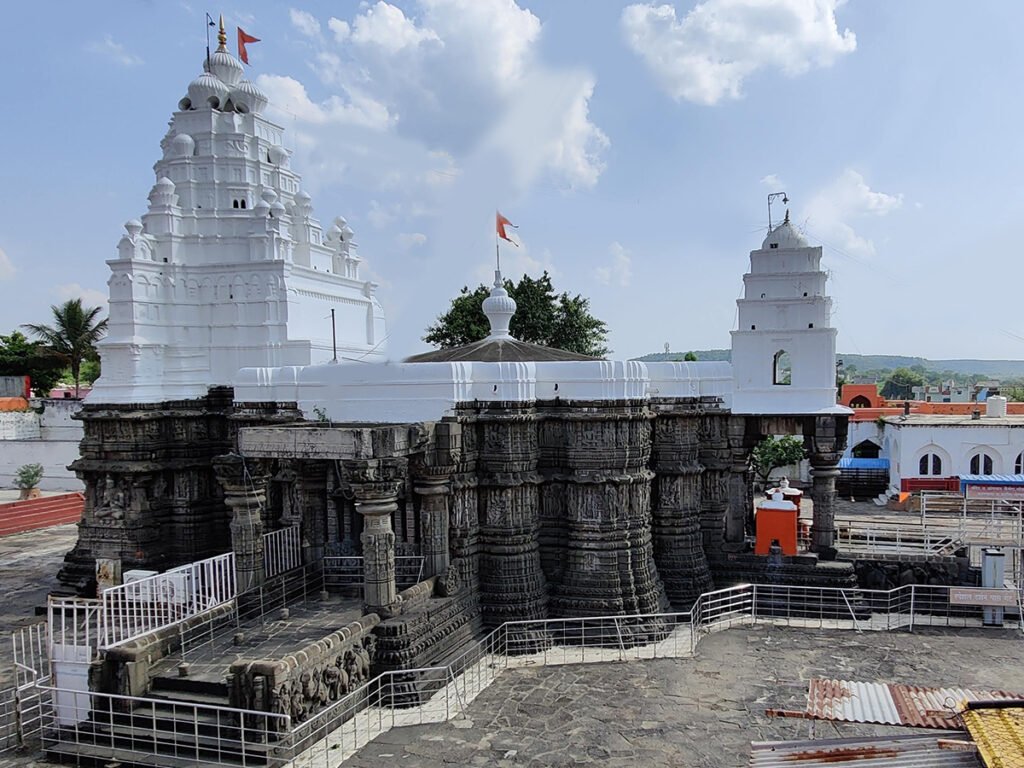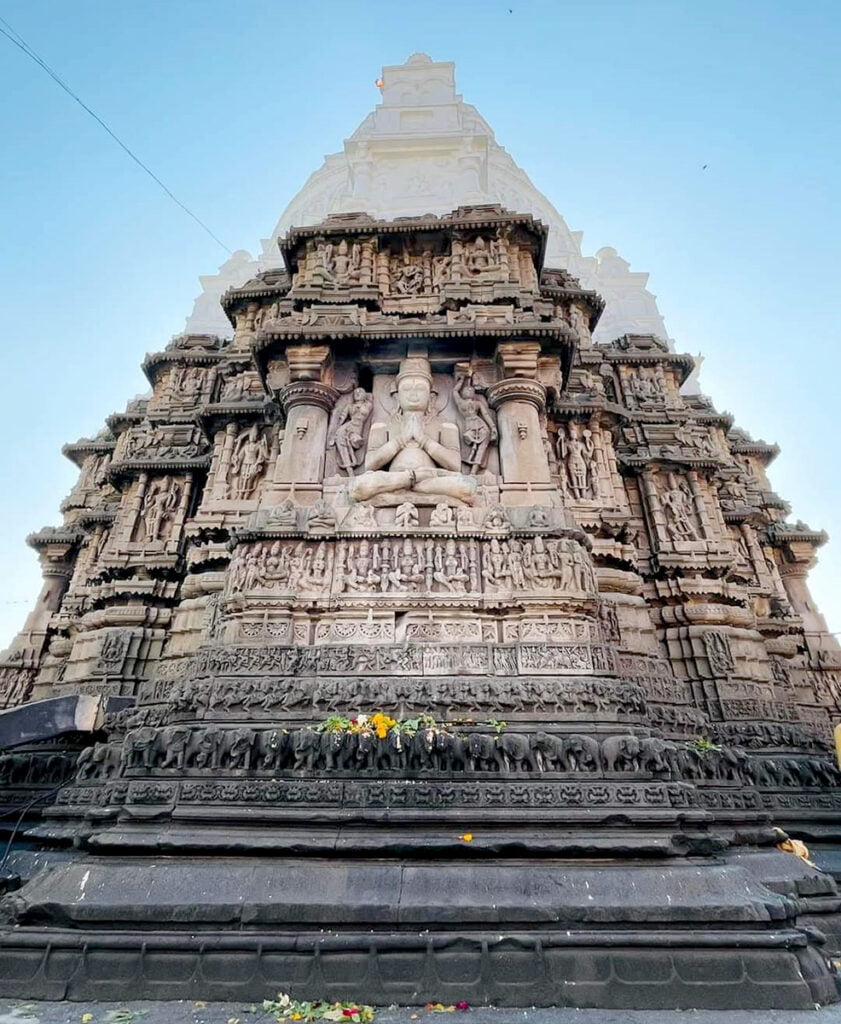Aundha Nagnath Temple: 8th Jyothirling with Divine Serpents
Aundha Nagnath Temple, one among 12 Jyothirlingas located at Hingoli district of Maharashtra is said to be built by Yudhishthira, the eldest of the Pandavas. The present structure is beleived to be built 1500 years ago.

“Amardakamidam Kashi Dughdeyamkila Jahnave!
Vishwesho Naganadhoyam, Bhawani Kanakeshwara!!”
Contents
Significance Aundha Nagnath Temple:
When Dakshaprajapati performed yagna, Lord Shiva was not invited. As he is one of the three Kalapurushas, and without his presence, no yagna can be performed, goddess Parvathi urged her father to invite Lord Shiva. However, her father insulted him and said no. Unable to tolerate this slight, she jumped into the yagnakunda (holy fire) and gave up her life. This instance made Lord Shiva angry with Dakshaprajapati and filled him with sorrow and unhappiness. He left Kailash and started wandering in the forests, eventually settling in Amardaka, a large ravine. Even there, he faced insults and felt dejected, which led to him turning his body into ashes.
Read More>> Trimbakeshwar Jyotirlinga Temple
Legend of Aundha Nagnath Temple:
During the period of vanvas (life in the forest) of the Pandavas, their cows used to drink water on the riverside and offer their milk in the river. Once Bhima observed this miracle and informed all his brothers. The Pandavas started removing water and were shocked to observe the water boiling in the middle of the river. Bhima attacked the river with his mace and found blood oozing out, and discovered a Shiv Linga.
On the West Coast, there used to live a demon named Daruk who used to harass the hermits. He would imprison them on an island and torment them. Among these prisoners, there was a Shiva devotee named Supriya who never ate food or drank water without first worshiping Lord Shiva. When Daruka heard about this, he ordered his guards to execute Supriya. However, Supriya started praying to Shiva for her life, and Shiva appeared, destroying all the demons and freeing the island from Daruk’s control.
According to the Vamana Purana, there lived a group of sages in a forest worshipping Lord Shiva. Once the lord decided to test the divinity and patience of the sages and came to the forest in the form of a digambara (nude ascetic) wearing only snakes. Upon seeing the lord’s body, the wives of the sages were attracted and left their husbands.
The sages became frustrated and lost their patience and cursed the lord for losing his linga. As a result, the Shiva linga fell on the earth, causing the entire world to tremble. Lord Brahma and Vishnu appeared and urged Lord Shiva to save the earth from destruction. The Lord granted their request and gave the boon of saving the earth in the form of the Jyotirlinga, which later became a place of worship for the nagas and was called Nageshvara or Nagnath.
During the reign of Aurangzeb, he wanted to demolish the Shri Nagnath Temple as he was intolerant towards Hinduism. Along with his men, he tried to demolish the temple, but suddenly thousands of bees came out of the temple and attacked his army. The demolition work was left half done, and devotees rebuilt the demolished portion.
Read More>> Sacred Kashi Vishwanath Temple: 11th Jyotirling of Liberation

Architecture of Aundha Nagnath Temple:
Temple architecture is so constructed that stones of temple wall and corridor are very effective. They still live very strongly from the times of Pandavas. Also, we did not find any Nandi in front of Mahadev. We keep the temple of Nandi separately at the back side other than this we also have Ganapati, Dattatreya, Nilakanteshwar, etc idols. In and around we find 108 Shiva temples and 68 shrines filled with the beauty of nature. We find snakes opening their hoods and dancing near ShivLinga and drink milk offered to them.
Some of the major architecture features of the Aundha Nagnath Temple:
Hemadpanti style: The temple is built in Hemadpanti style of architecture characterized by its intricate carvings and red sandstone construction.
Fortified enclosure: The temple is surrounded by a fortified enclosure that is found in almost all Hemadpanti temples.
Three parts: There are three main parts to the temple complex namely, the garbhagriha or the sanctum sanctorum, the sabha mandapa or the assembly hall, and the ardha mandapa or half hall.
Elaborate carvings: A temple has been adorned with the elaborate carvings, including depictions of Hindu gods and goddesses, animals, and geometric patterns.
Religious significance: The Aundha Nagnath Temple is of immense religious significance in Hinduism. Each Jyothirling has its specialties and as per our ancient scriptures, it is believed that a devotee who ever worships Lord here will be liberated from birth cycle and attains moksha.
Read More>> Sri Puri Jagannath Temple: The Lord of the Universe
Aundha Nagnath Temple Timing and Rituals:
Temple Timings:
- Generally, the temple is open from 4:00 AM in the morning to 9:00 PM in the evening.
- During the holy month of Shravan (usually falls between late July and mid-August), the timings might be extended to 10:00 PM.
Some Specific Puja Timings (these may vary slightly):
- Rudrabhishek Puja: 4:05 AM
- Aarti Puja: 12:00 PM
- Sreesan Puja: 4:00 PM
- Shejarti Puja: 11:00 AM
- Sayarakchai Puja: 8:30 PM
Important Rituals:
Though darshan is the primary intention of most devotees, there are countless pujas performed through the day. Some of them include:
Abhisheka: Here, the bathing ceremony offered to the Jyotirlinga is done using sacred items like milk, panchamrita-that is, a mixture of five nectars-and curd.
Aarti: The ritual done several times during the day involves waving ghee-or camphor-filled lamps in front of the deity.
Pooja Archana: Devotees can pray, deposit flowers and other pujas items to get blessings.
Festivals:
Aundha Nagnath Temple becomes more vibrant on certain festivals:
Mahashivratri: In last week of February or first week of March, that is the marriage of Lord Shiva and Parvati. Special pujas and decorations are done.
Shravan Month: While the whole month in sanctified for the devotees of Shiva, maximum congregation takes place and specific pujas are performed for the Lord.
It is a victory of good over evil and is an integral part of the traditional fervor of Dussehra, popularly known as Vijayadashami.
Aundha Nagnath Temple Official Website:
Although its not the official website, The Hingoli district website (https://hingoli.nic.in/) has a page dedicated to the Aundha Nagnath Temple

Places to visit near Aundha Nagnath Temple:
One of the most sacred sites is the Jyotirlingas, belonging to the town of Parli situated in the Beed district of Maharashtra, in the form of Shri Vaidyanatha Temple, colloquially known as the Parli Vaijnath Temple.
Hemedpathy Temples: While it comes to hemadpanthi style temples, there happens to be a highly dominant feature in the Hingoli district. Though the design produces architectural designs by applying them in different styles, this place becomes important culturally as well. You can find them in all the small towns and villages of the region.
Aundha Fort is popularly known as Avandha Killa. It is one of the historic forts between Nashik and Ahmednagar, situated in the Maharashtra state of India1. This fort falls under the range of Kalsubai. This is the only fort that resembles a huge needle.
There are other places of worship and temples in the Hingoli district and locality that you can visit to have some idea of that part of the region’s culture and traditions.
Hingoli: Hingoli is a district headquarters. It is a small town with their share of temples and historical sites. You can take out some time to roam about the town, its markets, and local cuisine.
Jawala Nagnath Temple: The Shiva temple is not much away from Aundha Nagnath and another holy place in the region.
Read More>> Danteshwari Temple Dantewada

How to reach Aundha Nagnath Temple:
By Air:
The nearest major airport: Chikkalthana Airport in Aurangabad, Maharashtra
Distance: approx. 170 kms away.
By Train:
The nearest railway station: Parbhani Railway Station
Distance: approx. 20 kms away from Aundha Nagnath Temple.
By Road:
Aundha Nagnath Temple is well-connected by road either from Parbhani or Aurangabad.
